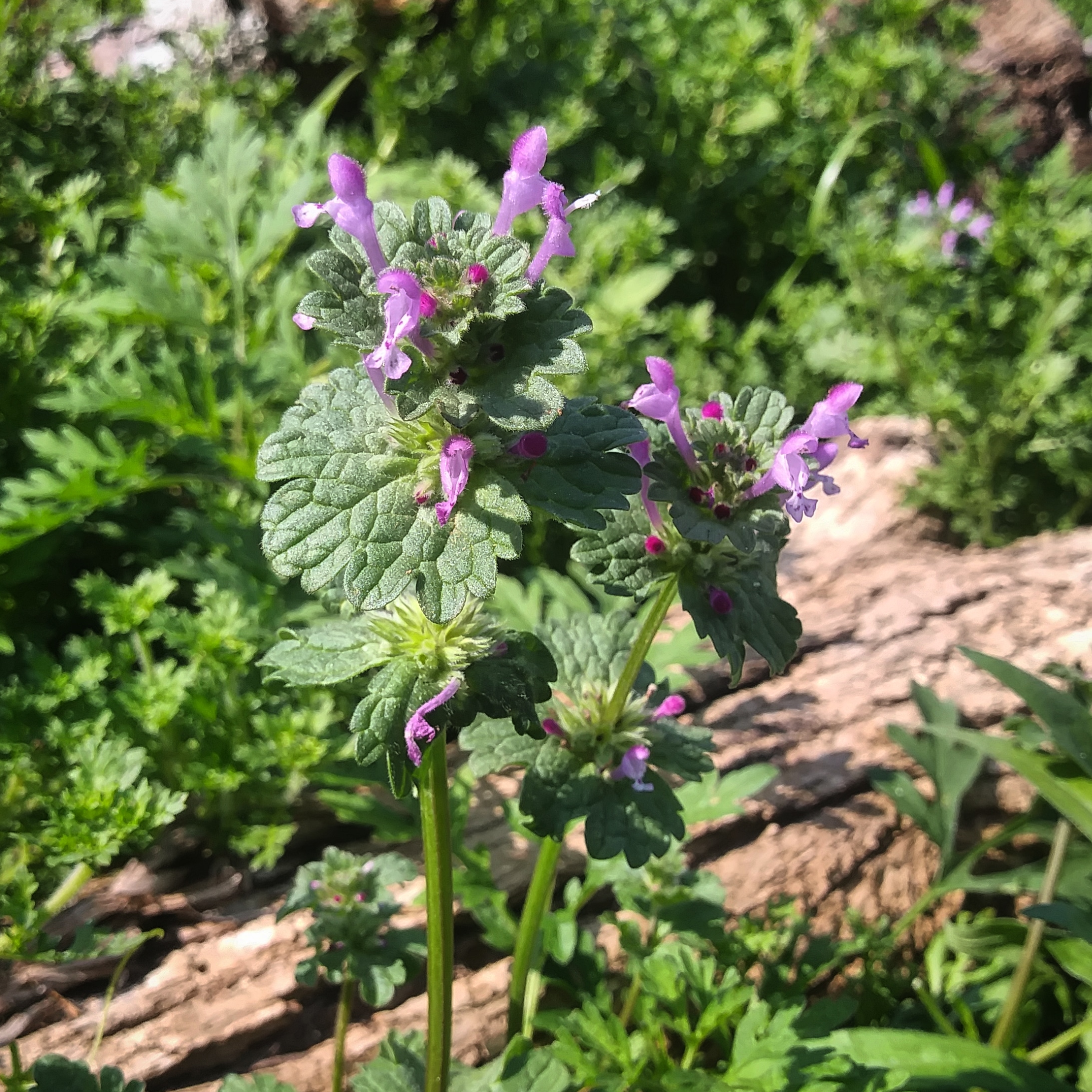Author’s Note: This post originally appeared on the SARCRAFT Blog on 6/6/18. All dates in this post have been updated.
This week’s plant for #WildEdibleWednesday is Lamium amplexicaule - Henbit Deadnettle, or just Henbit. So named because chickens absolutely love it, it’s very closely related to Purple Deadnettle from a few months ago, and the two can be used interchangeably. Consider it a 2-for-1 deadnettle deal: If you can learn how to use one, you know how to use the other by default. Called deadnettle because it resembles a nettle but without the sting (it’s “dead”), it’s a member of the broad and useful mint family, which includes other #WildEdibleWednesday plants of the past such as Lyre-Leaf Sage and Ground Ivy. It also includes better-known plants such as all of the mints (duh), basil, thyme, oregano, sage, and many other common culinary herbs.
A seasonal annual forb, Henbit is native to Eurasia and North Africa, but has become widely naturalized throughout temperate areas of the world, such as North and South America, South Africa, and Australia. It’s considered a lawn weed by many, and can be borderline invasive in some areas due to the fact that each plant can produce 2,000 or more seeds in a season. As such, you’ll never find just one henbit. Sometimes they’ll grow in thick swaths, choking out any other plant life, other times it’ll be a few plants spread over a large area. This is a big advantage in wilderness survival situations, or even just to us foragers who don’t like to cover acres of territory to fill our pouches. If you find a patch of henbit, you can usually collect all you want. It prefers somewhat open, sunny areas like lawns, pastures, roadsides, open woods, etc. Where I find it most commonly is in what are known as waste areas: abandoned construction sites, material staging areas, overgrown dumping grounds, abandoned home sites, vacant lots, etc.
Henbit grows from 3”-18” tall, with square stems typical of the mint family. The whole plant is covered in fine, thin hairs. Leaves are less than an inch long, and either squared-off or scalloped and grow in “collars” directly out of the stem. They have a distinct veining that gives them a wrinkled look. Flowers are tiny, tubular, and purple, and emerge from underneath the upper leaves in spring and early summer. Henbit has no deadly mimics, but how do you tell it apart from Purple Deadnettle? As we said earlier, it doesn’t really matter, since the two can be used interchangeably. But if you still want to, the easiest way to tell is the leaves. Both plants have similar growth habits, flowers, color, and habitat, but the leaves are definitely distinctive. Purple deadnettle leaves are triangular, smoother, and more delicate-looking. Henbit leaves are squared off or scalloped, heavily veined, and much messier looking.
Henbit’s primary use is as an edible. The hairs turn some people off and they’ll only eat it cooked, but that’s a personal preference. Henbit is a dark, leafy, green and tastes like one, too. It has a flavor similar to spinach or baby kale, but a little milder. It’s good raw in salads, although more as an accent than as a main herb because of the aforementioned hairs. It’s also edible cooked as a potherb, although I would recommend removing most of the stems for texture’s sake. Really though, it can be used in any dish that calls for spinach or kale. Soups, stews, smoothies, sandwiches, casseroles, and more can all be a place for Henbit. If you’re into juicing, throw a handful in there. It’s highly nutritious, and could arguable be called a superfood. It’s high in iron, magnesium, manganese, calcium, and vitamins A, C, E, and K, as well as a whole host of beneficial antioxidants and phytochemicals.
Medicinally, Henbit is best used internally as a tea. It is anti-rheumatic and anti-inflammatory, so it’s great for relieving chronic pain, soreness, and stiffness. As a diaphoretic and febrifuge, it’s great for breaking fevers and alleviating their unpleasantness. It helps balance the digestive system – it’s a gentle laxative, but also helps treat diarrhea and indigestion. Finally, it can help with menstrual cramps and excessive bleeding. For this reason, women who are pregnant should probably avoid it. Otherwise, it’s safe, although you should still follow our rule of 6-8 ounces of tea until you figure out how you react to it. It is a laxative, after all.
Externally, it makes a useful poultice. It’s an astringent, antiseptic, and anti-inflammatory, so it’s a good candidate to use as a spit poultice or water poultice for treating cuts, scrapes, burns, stings, and the like.
Henbit season is actually tapering off – it prefers cooler temperatures and rarely thrives in the hottest parts of summer except in cool, moist areas. But it’s still out there, so if you want to try it this year, get it while the getting’s good! Like so many of the plants we’ve covered, check your lawn first. There’s a solid chance you may have some there. Let us know how it goes – and if we missed anything, tell us in the comments!
Want to get some more hands-on experience foraging wild edibles in a guided setting? Join us for Wilderness Survival CORE on June 14-16! Learn more and register at https://www.sarcraft.com/course-registration/wilderness-survival-core!
- Alex

